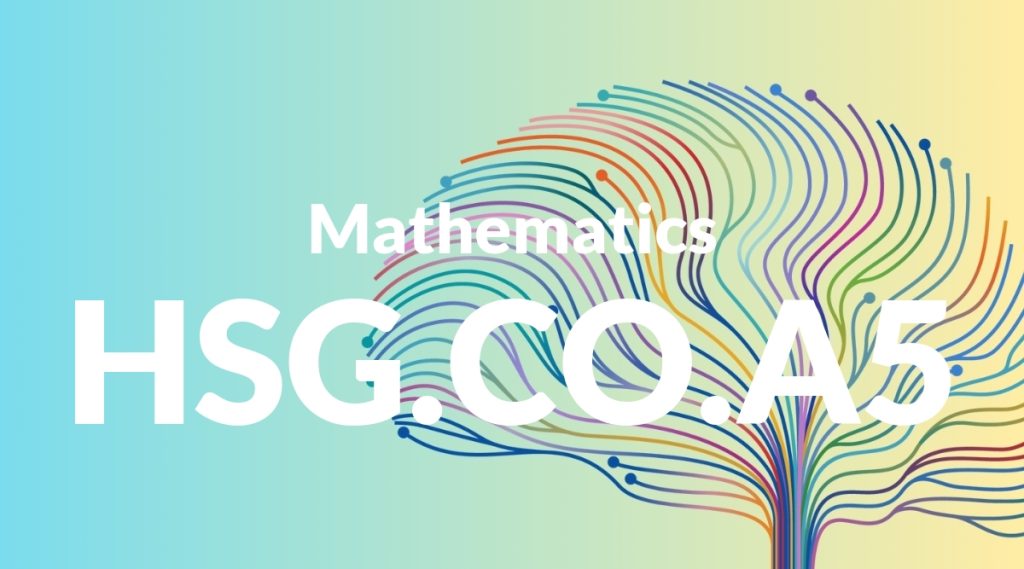Standard: HSG.CO.A5 – Given a geometric figure and a rotation, reflection, or translation, draw the transformed figure using, e.g., graph paper, tracing paper, or geometry software. Specify a sequence of transformations that will carry a given figure onto another.
Grade level: High School: Geometry
Subject: Mathematics
Domain: Congruence
Teacher Overview
This standard focuses on understanding and applying geometric transformations, such as rotations, reflections, and translations, to figures. Mastery of this standard is crucial as it lays the foundation for more advanced geometric concepts and real-world applications. Students should be familiar with basic geometric shapes and the coordinate plane, as well as the definitions of rotation, reflection, and translation.
After mastering this standard, students will be able to tackle more complex geometric proofs and applications, understanding how transformations affect figures in various contexts.
Common Misconception 1
Some students may think that the sequence of transformations does not affect the outcome. This is incorrect because the order in which transformations are applied can significantly change the final position and orientation of the figure.
Intervention 1
Introduce activities where students apply different sequences of transformations to the same figure and compare the results, emphasizing the importance of order.
Common Misconception 2
Another common misconception is that transformations alter the size or shape of the figure. This is incorrect; transformations such as rotation, reflection, and translation preserve the size and shape.
Intervention 2
Use dynamic geometry software to allow students to manipulate figures and observe that transformations do not change the size or shape, only the position and orientation.
Prerequisite Knowledge
Students should have a basic understanding of geometric shapes, coordinate systems, and the concepts of rotation, reflection, and translation.
Subsequent Knowledge
Students will develop skills in more complex geometric proofs, understanding the properties of shapes under transformation, and applying transformations in various fields such as physics and computer science.
Instructional Activities
- Practice problems involving sequences of transformations
- Using geometry software to visualize transformations
- Group activities to create and analyze transformation sequences
- Real-world applications such as designing patterns or navigating maps
- Interactive quizzes to reinforce understanding




